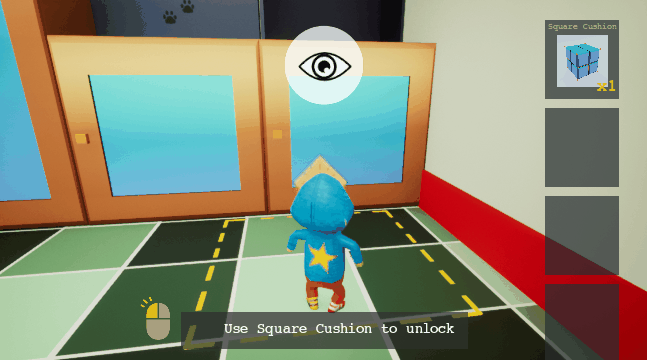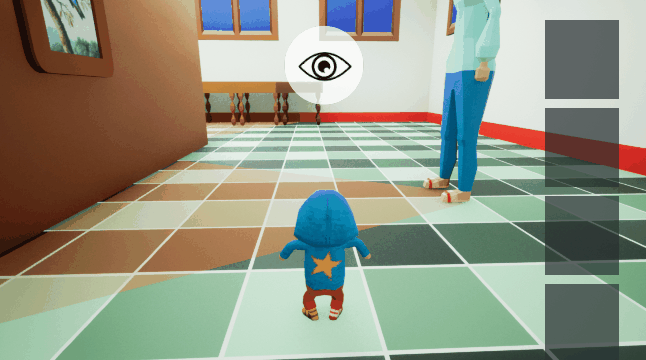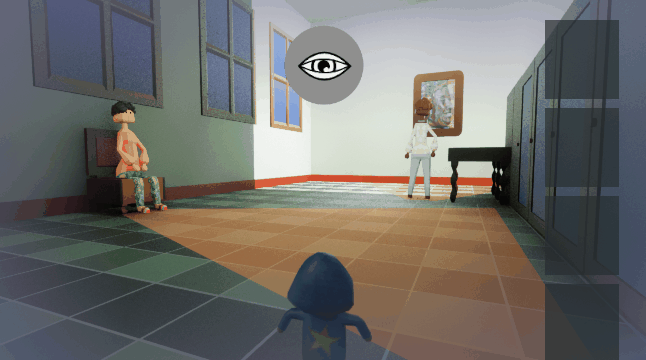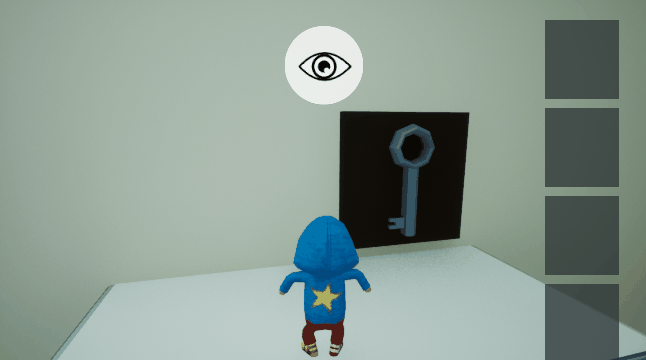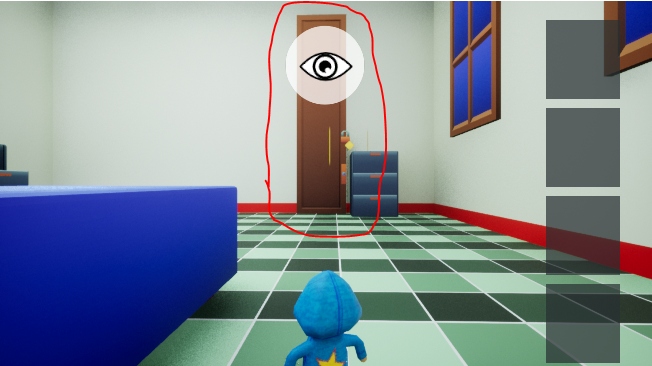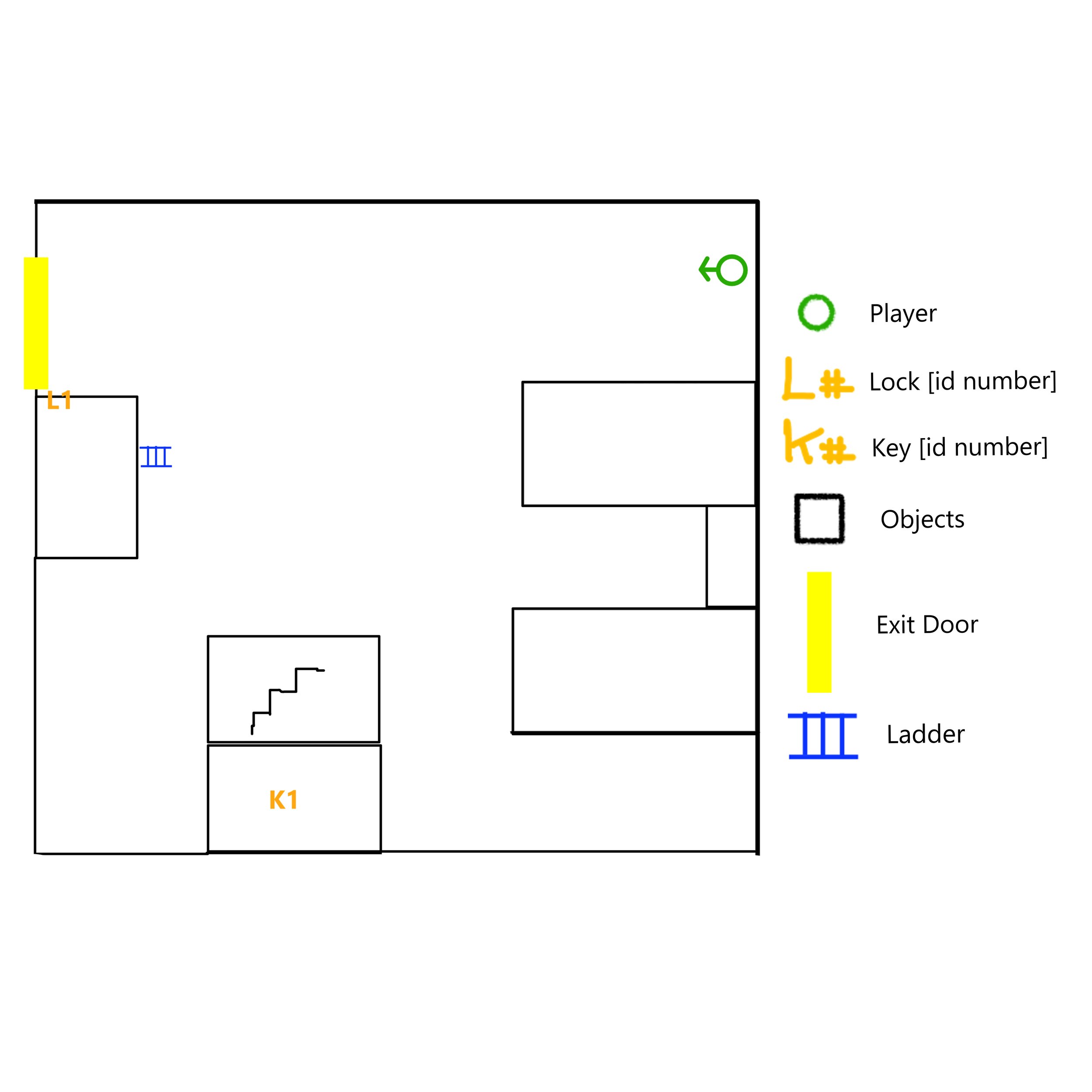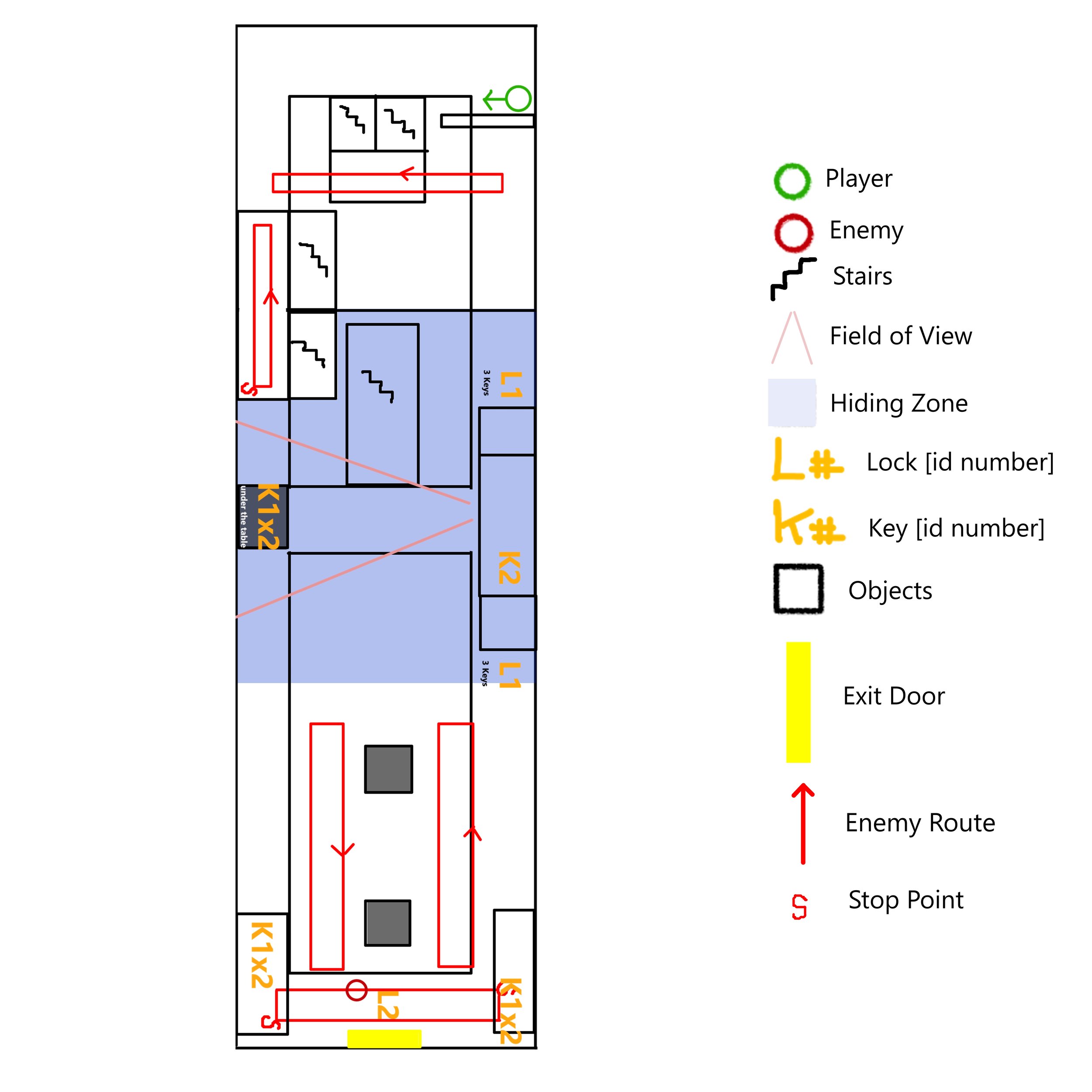Stealthy Toddler
Genre
Stealth
Development Role
Game Designer
Development Time
11 Weeks
Team Size
2
Tool Size
Unreal Engine 5, Krita, Blender
Game Concept
Control a child sneaking around the house to recover his PS1 while avoiding the adults
My Contributions
Gameplay Design
System Design
Level Design
Environmental Art
Design Pillars
Comedy
Stealth
Child Perspective
Systems
To achieve the final goal the player has to avoid all adults by identifying their behavior, finding alternative routes and hiding in the shadows.
Mechanics
Walking
Climbing
Picking up objects
Using objects
My Level Design Principles
for this Game
Setting the goal early in the level
In every level the player is shown the goal as soon as they start or very soon after.
Be forgiving
This game aims to provide a casual and funny experience, thus mistakes must not have harsh punishments and a degree of mistakes must be acceptable.
In game this was implemented by giving the player plenty of safe spaces, making the player collider smaller than the actual mesh, making the overall enemy placement not difficult and making the levels short so the player can get back to where they were in case they are caught and have to start over.
Invisible tutorial
Each level introduces one mechanic and reinforces it through its length without the use of intrusive text. The structure I used was
Present the game element in a safe space
Another encounter with a medium amount of challenge
Give and easy encounter with an already known mechanic to remind the player of it and to give the player space to rest
Hard encounter with the new mechanic
Create scenarios where your small size is an advantage
The levels have hidden alternative paths to the goal that are shorter than the explicit path.
The observant player is rewarded by gaining access to these.
Don’t overwhelm the player
Levels are presented in chunks to allow the player to process each of its elements.
Use of a common visual language
To reduce the amount of text and increase clarity the game uses the same objects and icons to indicate the same function.
For example the climbable surfaces always are the same furniture.
Level Sketches
The first step was always to sketch the level by thinking on what is its objective and what was necessary to achieve it. Each level required several iterations on the sketch until I felt it was ready.
Level 1 - Controls Tutorial
Level 2 - Static Enemies Tutorial
Level 3 - Darkness System Tutorial
Level 4 - Looping Enemies Tutorial
Level 5 - Sleeping Enemies Tutorial
Level 6 - Walking Enemies Tutorial
Level 7 - Final Level
Game Development
The whole development process of this game was recorded in the form of blog posts that can be seen here.
In these blog posts I go in more detail about the game conception, the original production plan, asset creation, mechanic and level iteration, replanning mid development and finishing the game.
Successes
Quick early prototyping allowed me to narrow down what I wanted the game to be, which helped with the planning process
Allocating time for mecha and system exploration gave me the space to add aspects missing from the original concept and remove elements that weren’t necessary. Also, allowed me to create a clearer image of what a good level should include
Recognizing failures in the design early on and option to “kill my darlings“ was crucial to ensure the game was finished
The general level design is good, from the “moment to moment” to the “level to level”
The game tone is consistent and effectively transmitted to the player
Designing first the last level, allowed me to define everything that would be needed in the future and prevented overscoping
Making deeply interconnected systems from the very beginning and general over design. Though it was not a particularly complex game, it was more complex than what it needed to be considering the resources available to me. This wasted some time of my early exploration that could have been used polishing the core more and exploring more level ideas.
Overestimating my artistic capacities which led to myself and the programmer having to crunch the last 2 weeks of development to get a decent final product
Not making more frequent builds of the game, nor having more people playing them to get early feedback. This would have allowed me to notice issues that weren’t found until the last few weeks much early on when they would have been easier to fix
Failures
Learnings
Better guiding the player by using shapes, colors and previously showed game elements
More effectively communicating my level designs via sketches
Insight in my tendencies to overdesign, now I am more conscious of it and will work to avoid it in the future
How to make a lot with little. The lack of assets made me realize that I didn't need everything that I thought. Also, it pushed me to be creative in finding and implementing simple solutions that add the most value
Technically speaking I learned how to optimize my games for UE5 by modifying the engine settings
